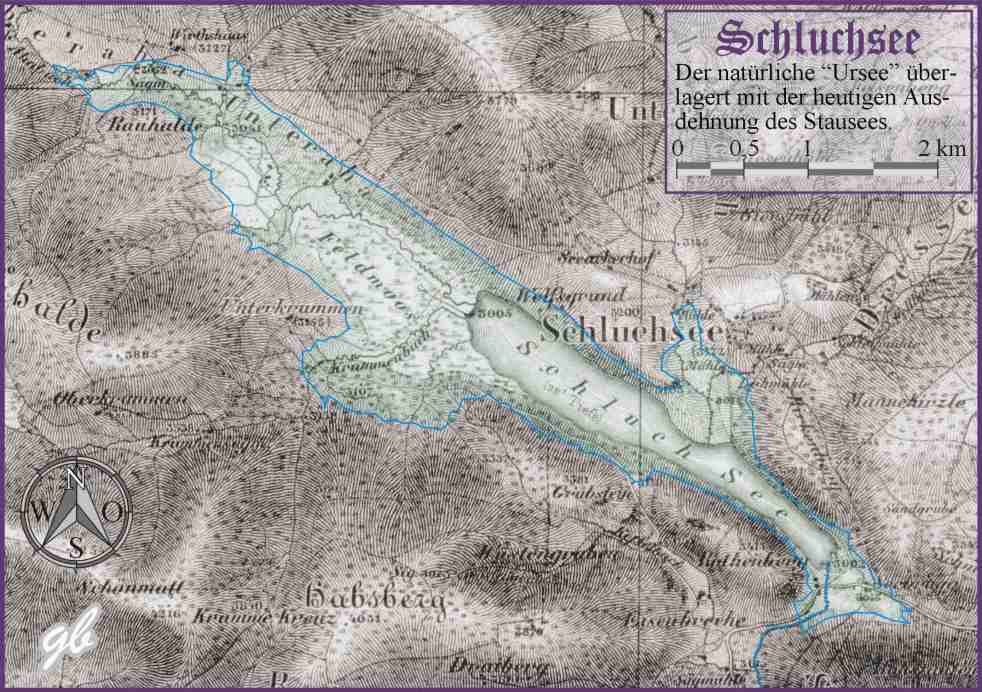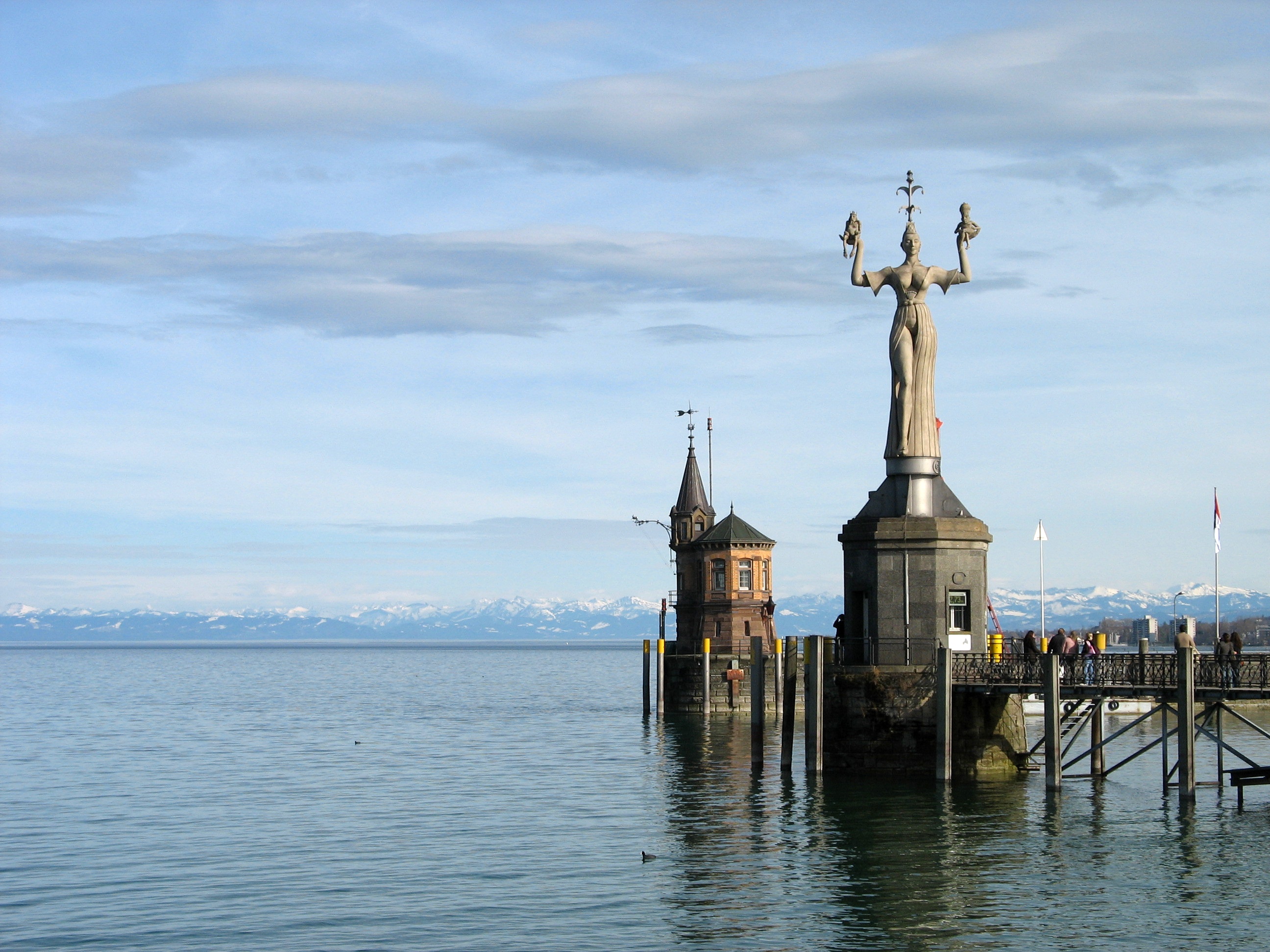|
Johann Baptist Weiß (priest)
Johann Baptist Weiß (1753-1800) was a German Benedictine monk, teacher and playwright. Life Johann Baptist Weiß was born on 4 January 1753 in Wittichen, took his monastic vows on 6 June 1773 at St. Blaise Abbey in the Black Forest and was ordained as a priest in 1776. He became a teacher of theology at the abbey. Later, he took over the parish of Schluchsee. On 21 June 1793 he gave the eulogy at the graveside of the abbot, Martin Gerbert. In 1794, after the schools in Konstanz Konstanz ( , , , ), traditionally known as Constance in English, is a college town, university city with approximately 83,000 inhabitants located at the western end of Lake Constance in the Baden-Württemberg state of south Germany. The city ho ... were taken over by the Benedictines of the anterior Austrian bishoprics, Pastor Weiß was entrusted with the post of apostolic prefect (''Präfektstelle'') at the grammar school there.Joseph Bader: ''Das ehemalige Kloster St. Blasien auf dem Schwarzwald ... [...More Info...] [...Related Items...] OR: [Wikipedia] [Google] [Baidu] |
Benedictine
The Benedictines, officially the Order of Saint Benedict (, abbreviated as O.S.B. or OSB), are a mainly contemplative monastic order of the Catholic Church for men and for women who follow the Rule of Saint Benedict. Initiated in 529, they are the oldest of all the religious orders in the Latin Church. The male religious are also sometimes called the Black Monks, especially in English speaking countries, after the colour of their habits, although some, like the Olivetans, wear white. They were founded by Benedict of Nursia, a 6th-century Italian monk who laid the foundations of Benedictine monasticism through the formulation of his Rule. Benedict's sister, Scholastica, possibly his twin, also became a religious from an early age, but chose to live as a hermit. They retained a close relationship until her death. Despite being called an order, the Benedictines do not operate under a single hierarchy. They are instead organized as a collection of autonomous monasteries ... [...More Info...] [...Related Items...] OR: [Wikipedia] [Google] [Baidu] |
Wittichen
Wittichen is a village that belongs to Kaltbrunn in the municipality of Schenkenzell in the district of Rottweil in the southwest German state of Baden-Württemberg. History In 1291, Luitgard, later the founder of the convent of Wittichen Abbey, was born in Wittichen. The abbey was founded in 1324. In 1498 Wittichen fell into the hands of the Swabian princes of Fürstenberg. The first attempt to close the convent was in 1540. In 1643 it was destroyed and its rebuilding took until 1681. During the Napoleonic era, Wittichen was secularised in 1803 and went to the Grand Duchy of Baden in 1806. Economy There was mining in Wittichen for centuries. Sights * Wittichen Abbey with its convent museum, exhibits on the history of the monastery and mining * Several spoil heaps from the days of mining still exist and some are accessible * Geological Educational Path, Wittichen Trails * Hansjakob Way I * Gengenbach–Alpirsbach Trail Events On the second Sunday in October is ... [...More Info...] [...Related Items...] OR: [Wikipedia] [Google] [Baidu] |
Black Forest
The Black Forest ( ) is a large forested mountain range in the States of Germany, state of Baden-Württemberg in southwest Germany, bounded by the Rhine Valley to the west and south and close to the borders with France and Switzerland. It is the source of the Danube and Neckar rivers. Its highest peak is the Feldberg (Black Forest), Feldberg with an elevation of above sea level. Roughly oblong in shape, with a length of and breadth of up to , it has an area of about . Historically, the area was known for forestry and the mining of ore deposits, but tourism has now become the primary industry, accounting for around 300,000 jobs. There are Baroque fortifications in the Black Forest, several ruined military fortifications dating back to the 17th century. History In ancient times, the Black Forest was known as , after the Celtic deity, Abnoba. In Roman times (Late antiquity), it was given the name ("Marcynian Forest", from the Germanic word ''marka'', "border"). The Black ... [...More Info...] [...Related Items...] OR: [Wikipedia] [Google] [Baidu] |
Schluchsee (municipality)
The Schluchsee () is a reservoir lake in the district of Breisgau-Hochschwarzwald, southeast of the Titisee in the Black Forest near Freiburg im Breisgau, Germany. Name In the Alemannic dialects of the region the name of the lake is the ''Schluechs'' or ''Schlues'' . Badisches Wörterbuch, Vol. IV, p. 622 f. Historical sources also spell it with a diphthong: 983 ''lacus Sluochse'', 1095 ''Schluochsee'', 1125 ''predium Sluocse'', 1312 ''der sê ze Sluoze''. Thus it cannot be claimed that the name, as is often asserted, from the Middle High German ''slûch'' ="pipe, tube" (Alemannic ''Schluuch''), because in this case in the present dialect and the historical sources no diphthong was available. Albert Krieger links the name to the Middle High German ''sluocht'' "ravine". But this meaning is also not accurate. Location The Schluchsee, with its height of above sea level, is the highest reservoir in Germany and also the largest lake in the Black Forest. By contrast, t ... [...More Info...] [...Related Items...] OR: [Wikipedia] [Google] [Baidu] |
Martin Gerbert
Martin Gerbert (11 August 1720 – 3 May 1793), was a German theologian, historian and writer on music, belonged to the noble family of Gerbert von Hornau, and was born at Horb am Neckar, Württemberg, on 12 (or 11 or 13) August 1720. Life He was educated at Freiburg im Breisgau, at Klingnau in Switzerland and at the Order of St. Benedict, Benedictine St. Blaise's Abbey in the Black Forest, where in 1737 he took the vows. In 1744 he was ordained priest, and immediately afterwards appointed professor, first of philosophy and later of theology. Between 1754 and 1764 he published a series of theological treatises, their main tendency being to modify the rigid scholastic system by an appeal to the Fathers, notably Augustine of Hippo, Augustine; from 1759 to 1762 he travelled in Germany, Italy and France, mainly with a view to examining the collections of documents in the various monastic libraries. In 1764 he was elected prince-abbot of St Blaise's, and proved himself a model ruler ... [...More Info...] [...Related Items...] OR: [Wikipedia] [Google] [Baidu] |
Konstanz
Konstanz ( , , , ), traditionally known as Constance in English, is a college town, university city with approximately 83,000 inhabitants located at the western end of Lake Constance in the Baden-Württemberg state of south Germany. The city houses the University of Konstanz and was the residence of the Roman Catholic Diocese of Konstanz for more than 1,200 years. Location The city is located in the state of Baden-Württemberg and situated at the banks of Lake Constance (''Bodensee'' in German). The river Rhine, which starts in the Swiss Alps, passes through Lake Constance and leaves it, considerably larger, by flowing under a bridge connecting the two parts of the city. North of the river lies the larger part of the city with residential areas, industrial estates, and the University of Konstanz; while south of the river is the old town, which houses the administrative centre and shopping facilities in addition to the ''Hochschule'' or the ''University of Applied Sciences''. C ... [...More Info...] [...Related Items...] OR: [Wikipedia] [Google] [Baidu] |
18th-century German Writers
The 18th century lasted from 1 January 1701 (represented by the Roman numerals MDCCI) to 31 December 1800 (MDCCC). During the 18th century, elements of Enlightenment thinking culminated in the Atlantic Revolutions. Revolutions began to challenge the legitimacy of monarchical and aristocratic power structures. The Industrial Revolution began mid-century, leading to radical changes in human society and the environment. The European colonization of the Americas and other parts of the world intensified and associated mass migrations of people grew in size as part of the Age of Sail. During the century, slave trading expanded across the shores of the Atlantic Ocean, while declining in Russia and China. Western historians have occasionally defined the 18th century otherwise for the purposes of their work. For example, the "short" 18th century may be defined as 1715–1789, denoting the period of time between the death of Louis XIV of France and the start of the French Revolut ... [...More Info...] [...Related Items...] OR: [Wikipedia] [Google] [Baidu] |
German Benedictines
German(s) may refer to: * Germany, the country of the Germans and German things **Germania (Roman era) * Germans, citizens of Germany, people of German ancestry, or native speakers of the German language ** For citizenship in Germany, see also German nationality law **Germanic peoples (Roman era) * German diaspora * German language * German cuisine, traditional foods of Germany People * German (given name) * German (surname) * Germán, a Spanish name Places * German (parish), Isle of Man * German, Albania, or Gërmej * German, Bulgaria * German, Iran * German, North Macedonia * German, New York, U.S. * Agios Germanos, Greece Other uses * German (mythology), a South Slavic mythological being * Germans (band), a Canadian rock band * "German" (song), a 2019 song by No Money Enterprise * ''The German'', a 2008 short film * "The Germans", an episode of ''Fawlty Towers'' * ''The German'', a nickname for Congolese rebel André Kisase Ngandu See also * Germanic (disambi ... [...More Info...] [...Related Items...] OR: [Wikipedia] [Google] [Baidu] |
18th-century German Roman Catholic Priests
The 18th century lasted from 1 January 1701 (represented by the Roman numerals MDCCI) to 31 December 1800 (MDCCC). During the 18th century, elements of Enlightenment thinking culminated in the Atlantic Revolutions. Revolutions began to challenge the legitimacy of monarchical and aristocratic power structures. The Industrial Revolution began mid-century, leading to radical changes in human society and the environment. The European colonization of the Americas and other parts of the world intensified and associated mass migrations of people grew in size as part of the Age of Sail. During the century, slave trading expanded across the shores of the Atlantic Ocean, while declining in Russia and China. Western world, Western historians have occasionally defined the 18th century otherwise for the purposes of their work. For example, the "short" 18th century may be defined as 1715–1789, denoting the period of time between the death of Louis XIV, Louis XIV of France and the start ... [...More Info...] [...Related Items...] OR: [Wikipedia] [Google] [Baidu] |
1753 Births
Events January–March * January 3 – King Binnya Dala of the Hanthawaddy Kingdom orders the burning of Ava, the former capital of the Kingdom of Burma. * January 29 – After a month's absence, Elizabeth Canning returns to her mother's home in London and claims that she was abducted; the following criminal trial causes an uproar. * February 17 – The concept of electrical telegraphy is first published in the form of a letter to ''Scots' Magazine'' from a writer who identifies himself only as "C.M.". Titled "An Expeditious Method of Conveying Intelligence", C.M. suggests that static electricity (generated by 1753 from "frictional machines") could send electric signals across wires to a receiver. Rather than the dot and dash system later used by Samuel F.B. Morse, C.M. proposes that "a set of wires equal in number to the letters of the alphabet, be extended horizontally between two given places" and that on the receiving side, "Let a ball be suspen ... [...More Info...] [...Related Items...] OR: [Wikipedia] [Google] [Baidu] |







